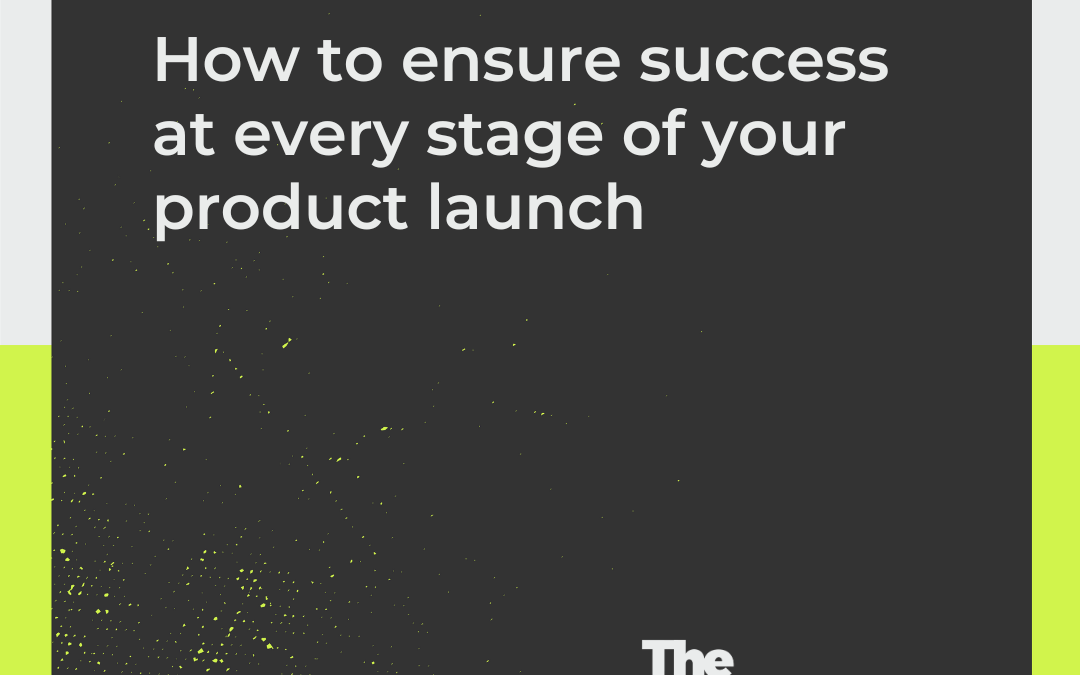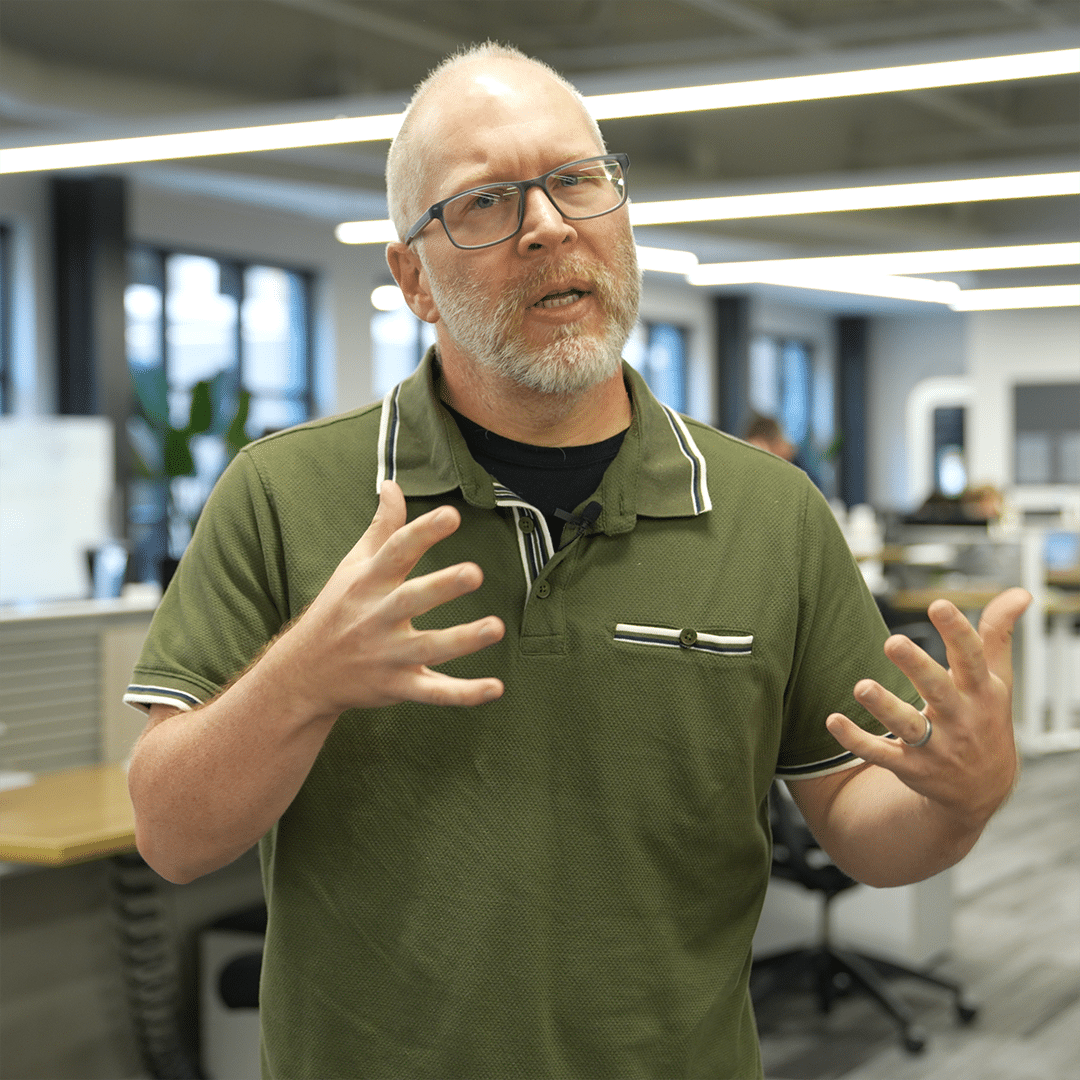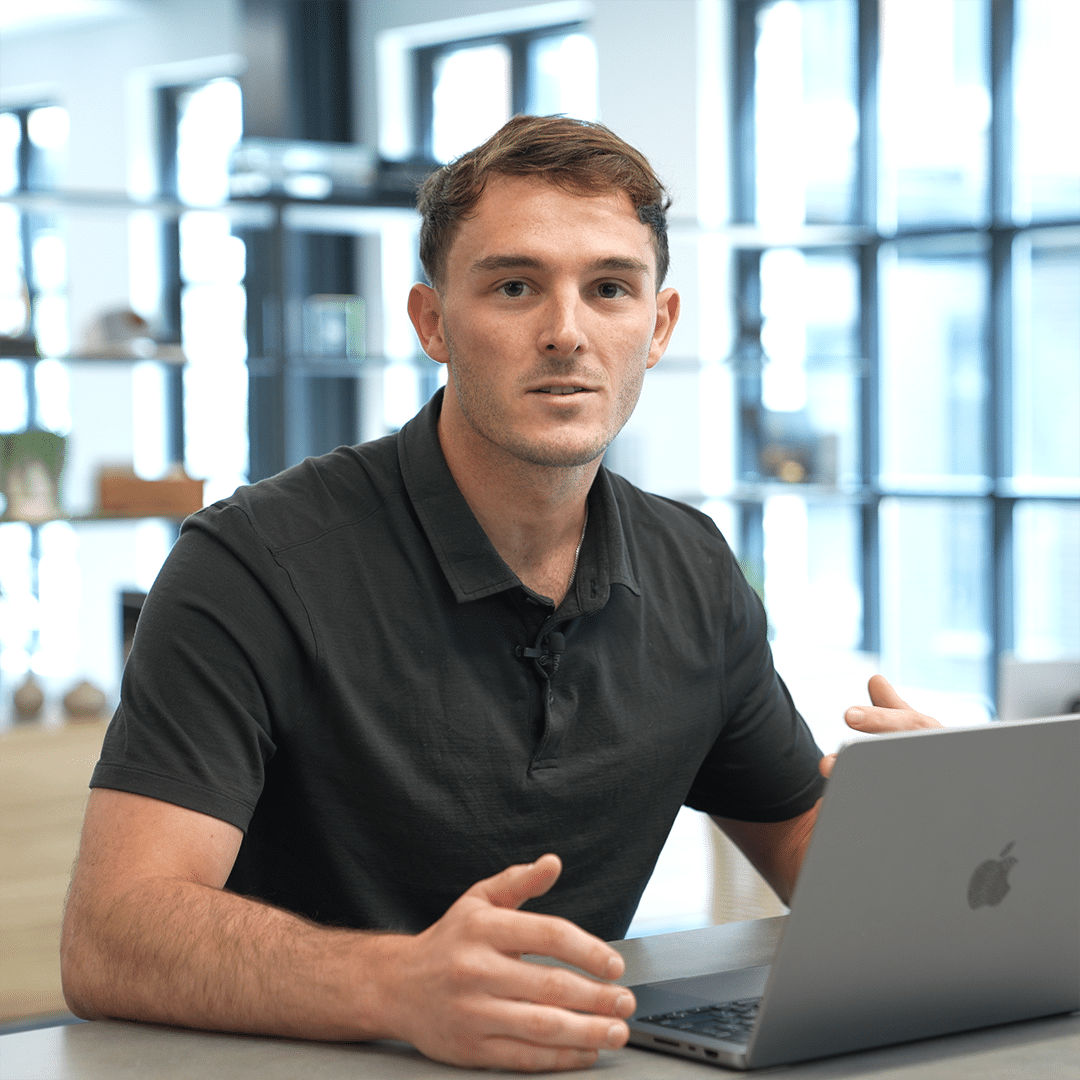How to Ensure Success at Every Stage of Your Product Launch
The Inventory
This Episode
Your product launch doesn’t end on release day.
In this episode, host Joe Mills sits down with Cade Jones, Marketing Strategist at Element Three, to explore a three-phase approach to product launches. They discuss how OEMs can build anticipation, sustain momentum post-launch, and measure success every step of the way.
You’ll learn:
- How a phased approach strengthens product launch impact
- Why building anticipation pre-launch can drive long-term success
- Which metrics can help OEMs measure success before, during, and after launch
Episode Transcript
This transcript was generated with the help of AI and may contain some errors.
Cade Jones [00:00:00]:
So, content, you likely have a whole inventory worth of assets here that have been created really leading up to this moment of launch. And how can you continue to leverage those or start to work them into? Whether it’s your paid media campaigns, your paid media ecosystem, your content, calendar, blog, newsletter, otherwise utilizing those assets to start to deploy them afterwards is like a big part of that.
Joe Mills [00:00:27]:
Welcome to The Inventory, the show designed to give OEMs and dealers like you actionable insight on channel marketing. From co-op programs to product portfolio design, we’ll arm you with the information you need to excel, to enter new markets successfully, to build lasting OEM dealer relationships, and ultimately to move more inventory. Let’s get started. Hey, everyone. Today we are joined by Cade Jones. Cade is a marketing strategist here at Element Three and we are going to talk to you about all things product launch. Specifically, we are going to cover the areas that people commonly make mistakes, how you can do it better, and the metrics you can use to judge the effectiveness of your program. Hope you enjoy.
Joe Mills [00:01:08]:
Cade, I’m excited to have you on. Welcome to The Inventory.
Cade Jones [00:01:11]:
Happy to be here, Joe.
Joe Mills [00:01:13]:
Okay, so today we want to make sure that we cover product launches and specifically we want people to come away with a framework for how they could measure success of their product launch and what is potentially a new way of thinking about their product launch. Not going to beat around the bush. It’s sort of thinking both of those ideas inside of this, this pre-launch at the moment of launch and post-launch framework. So let’s dive right in, man. What’s the area that you think people miss or consistently get wrong when they’re getting ready to launch a new product?
Cade Jones [00:01:48]:
Yeah. So there’s really two things here. There’s one that people anticipate or think of a launch as just that one moment in time. So the moment in time where that product, whatever it might be, is released to whatever audience they’re directing that product. So the consumer, a dealer, whoever it might be, but they often forget about really there’s like three parts of it which you kind of just hinted at there. So there’s the pre, during and post-pre-launch, a lot of people just anticipate the product’s going to sell themselves. So we’ll put it out in the world. The consumer will know instantly.
Cade Jones [00:02:21]:
I need this. Because of xyz, they fail to really like go through the process of building up the anticipation and building up the momentum to that point of launch.
Joe Mills [00:02:31]:
Yeah.
Cade Jones [00:02:31]:
On the flip side though, post-launch, so you break that product to market, it’s in the ecosystem and everything. And you basically lead it up to this cliff and then you stop at product launch. There’s a whole other third phase of this where you need to like continue and build on that momentum and then start to work that product into like your evergreen ecosystem and really like ride that wave they’ve built up over time. So those are really like the two things that I think people miss most often.
Joe Mills [00:02:59]:
Yeah, let’s talk about the first one there. On the pre-launch side of things, what I could imagine, tell me where this is wrong is you’ve got a team who’s running around getting assets, they’re waiting for the product to be in hand. They’re basically creating everything for that launch moment. What are the things they could be doing before then? Because I can imagine, I’m a marketer, I’m at an OEM, I’m waiting on this product being built so that I can actually create assets to go and do marketing with. But what are the, the things that I’m maybe not looking at it appropriately or what could I be doing beforehand to build, build that sort of anticipation you talked about?
Cade Jones [00:03:35]:
Yeah. So Joe, let me ask a question back. Are you perfectionist?
Joe Mills [00:03:38]:
Unfortunately, sometimes a lot of marketers are.
Cade Jones [00:03:41]:
So one thing that we see a lot is that people will spend rounds and rounds of revisions on visuals, on messaging, on positioning. When really in that teaser phase, you can deploy that in incremental bits and start to learn and test and see. We think we want this audience here, we think this product’s for them, we think this messaging is aligned to them, but we’re not a hundred percent sure. So we’re going to sit here in this internal review cycle, go back and back and forth around what we think actually works. You could deploy that, you could put that into the market, try the different audiences, try the different positioning, see what works, measure it, look at the click-through rate, look at the engagement on that content and start to learn. Those insights will carry you through launch and then way beyond. So you don’t have to get it right immediately. Use that as a testing phase.
Joe Mills [00:04:29]:
Yeah, okay, that makes a lot of sense. On the flip side, the post, post engagement I’ve, I’ve gone through, I’ve done our launch. Maybe we used a trade show to really debut this new product to the market. We’ve maybe debuted at a dealer meeting, Whatever. I’m post-launch now. What’s the area you talked about? Integrating it into my normal cadence. How’s that work? What do I do?
Cade Jones [00:04:52]:
Yeah, so I think it is both in content and distribution. So content, you likely have a whole inventory worth of assets here that have been created really leading up to this moment of launch. And how can you continue to leverage those or start to work them into Whether it’s your paid media campaigns, your paid media ecosystem, your content calendar, blog, newsletter, otherwise utilizing those assets to start to deploy them afterwards is like a big part of that. Yeah.
Joe Mills [00:05:21]:
The thing that just came to my mind, I don’t know if you have a perspective on this, but I’m going to put it in a world that you oftentimes sit inside of in the RV space. All right, I just brought a new, let’s say it’s opening up a new product line for me, so maybe a new class of RV. How do I think about balancing out? I’m just going to use easy numbers. I had nine products that I sold, now I have 10. Is it as simple as saying, okay, great, this is going to be 1/10 of my program or is there any guardrails you could put around? All right, it’s post-launch. How much, how much do I continue focusing on it versus pull it back and promote the other ones? What are your thoughts?
Cade Jones [00:05:55]:
Yeah, so I think a lot of that has to do with what your production schedule and what your production plans are. If it is a brand new class of RV and you don’t have a ton of insight into like what your pipeline economics look like, the number of leads or number of individuals you need interested in that product to sell it, it really starts to come down to like that production schedule and you’re going to have a lot of early indicators through your teaser and launch. Especially if you’re an RV company, you’re selling through a dealer, you’re going to get intuition through them of like what the interest in this product is going to look like. Combine that you probably have goals set around your production schedule, already start to use that and the dealer insights and then also what you’re seeing on the front end from a demand side to see, is this product going to be able to carry some of that momentum in and maybe it takes like a little bit less marketing support or if it is something you’re really stepping brand new into a market and you don’t have a lot of insight, your brand isn’t necessarily tied to that type of product. It might take a little bit more, it might take a little bit more of a push and really going on the offensive to a higher level or higher degree than otherwise.
Joe Mills [00:06:59]:
You just highlighted a reason to have A pre-launch phase too. Because you talked about the demand that you could see being built already. If you’re looking at your and we’re going to get into measurement here like right now. But if you’re looking at your KPIs from pre launch and you’re like those are going pretty well, people seem like they’re going to be interested in this. Whether that is an end user, like an RV customer or it’s a business who’s buying your heavy equipment. Like I’ve got people who want this. That should dictate how much post post launch also gets focused on that product.
Cade Jones [00:07:30]:
Yeah, that’s fair. And I think too it’s like we break down that like that early demand signal and indication step. There’s ways to suss out whether it is, oh, this is cool, I’m intrigued in this. No, actually maybe I have action to it. So a lot of times there’s maybe it’s like the pre-teaser, like sign up to learn more or sign up to be informed. As this thing starts to come out, there’s a way in terms of like a elevated offer in that that just takes it a step higher in terms of that barrier to entry. So you can start to gauge some of that interest because you will like you said, have a lot of signals and indicators on the front side of it. But the more you can start to like build in that layer and start to understand like true intent, I think can help a lot of that too.
Joe Mills [00:08:15]:
Well, that’s a great segue. Let’s talk about maybe one or one to five metrics or ways people could be measuring success at each step along that journey, the pre, during and post.
Cade Jones [00:08:26]:
So let’s start with pre. Sure. So pre on the front side you are measuring a lot of what I said earlier. So you want to understand the engagement. So you want to understand of these things that we’re putting the market, how we are saying or how are we describing this product, how is that resonating? We’re not resonating and that matters. So you’re caring about click through rates, engagement rates. You’re also probably caring about reach. So you want to understand like how many people are you able to get eyeballs on this? And then it’s all relative in terms of other two I just talked about.
Cade Jones [00:08:53]:
You’re starting to get closer to product is where you’re actually starting to like capture some of that interest. And so the classic-like lead generation thing starts to come into play. But you also again kind of what I was talking about there with that elevated offer, want to understand like lead quality in that. And so it begins a game of like volume engagement, getting into like the quality individual, somebody who is really aligned with this product. Because once you get to a point of launch, if you’re selling through a dealer distribution model and you’re an OEM, you really are going to start to care about how many people are we able to deliver to our dealer who are ready to have that sales conversation. And so as we’re getting into the launch phase, that is where you’re trying to turn some of those leads and interest you’ve created already into a true opportunity for a dealer to which at that point then you’re working out a launch and then to post-launch you’re caring about how many of those people are then turning into sales. And then over time how are you able to grow your share of voice in this product set or this class of RV as we’ve been using that example, and then at the end of the day growing market share in that like whatever that thing is. So it’s that slow progression that builds through throughout the whole journey.
Joe Mills [00:10:01]:
Yeah, I think the frame that has gotten to my head is as a business it’s tempting to want to go back to like oh, look at the correlation I can make to a sale as quickly as you can. Obviously in a pre launch phase you can’t be doing that. And actually you might want to redefine your metrics from performing to testing oriented. So you talked about putting this message out, putting this creative out, what’s hitting what channels, working so that as you get closer and you’re needing to start evaluating lead quality and then in the moment of launch actually delivering, we’ll keep using the RV example, foot traffic to a dealer verified walk in things of that nature. If you can test well, learn from it, iterate on that message, deliver really good targeted messaging to the audience you want. At the start who’s saying to you, hey, I’m interested in this product, come sell to me. You can do that. And then in the long term you’re starting to look at like penetration in the market.
Joe Mills [00:10:57]:
So you go from basically on end of the spectrum from learning to performing. And the metrics change across time as you move from an environment where you are simply trying to learn to one where you are needing to perform.
Cade Jones [00:11:09]:
You nailed it. And I think the other side of it too is that with bigger ticket products, the life cycle and like the days to close, the number of like days in between somebody showing interest and making that decision is a pretty substantial amount of time. I mean, it can be 400. It could be a year plus in this situation. And so seeing some of those lagging indicators like market share and share of voice, like they may not show up immediately, but some of those metrics you were just talking about, there can be those leading indicators to say that, yes, we are marching towards this. It may not come all the way to fruition because it’s going to take a year, two years, three years sometimes to get like to a point where that is noticeably shaping in the market.
Joe Mills [00:11:49]:
Kate, thanks so much for talking about product launch, man. Appreciate coming on.
Cade Jones [00:11:51]:
Yeah, thanks, Joe. Appreciate it.
Joe Mills [00:11:54]:
Element Three is a full-service marketing agency that bridges the gap between OEMs and their dealers. For more insights on how to go to market, well, in the dealer model, head to elementthree.com.
Sharing Expertise
What good is learning something if you don't pass it on? You can tap into what we know right now – from dealer programs to determining brand architecture – and you don't have to give us a thing.




